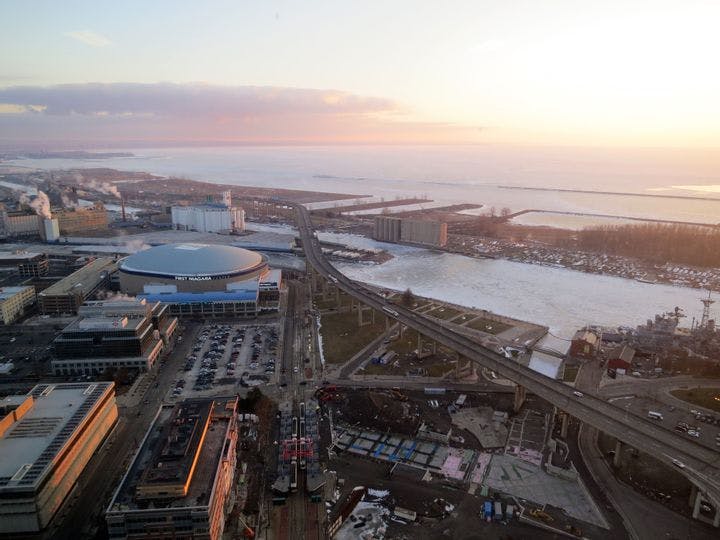Spring 2008
Shrink to Greatness
– The Wilson Quarterly
Buffalo is just the latest old, cold city where urban fortunes seem stuck in reverse. Can we let these cities aspire to be smaller?
Buffalo is not the only old, cold city where urban fortunes seem stuck in reverse. Cleveland, Camden, and Detroit can tell the same tale. When cities shrink, increased poverty is a likely outcome. Declining areas with cheap housing become magnets for even more poor people, who drive up demand for social services. Buffalo’s advantages—good transportation, plentiful electricity, proximity to Niagara Falls—are historic. Its disadvantages—bad weather and a lack of jobs—are city wreckers of the most modern sort.
Buffalo’s last boom occurred in the 1920s. It got its first great boost from the Erie Canal a century earlier, when it became a premier transfer point for wheat and other goods from the boats of the Great Lakes to the barges that traveled east on the canal. The invention of a steam-driven grain shovel made the city the world’s leading grain port. So much wheat was offloaded that it became a flour milling center. Its transportation advantages attracted steelworks, and with its access to the electricity generated by Niagara Falls it began calling itself the City of Light.
But eventually trucks and efficient rail transport undermined Buffalo’s raison d’être, writes Edward L. Glaeser, an economist at Harvard University. Its population, 580,000 in 1950, is now well under 300,000.
Since 1950, the federal government has invested billions upon billions of dollars in Buffalo and other failing cities, Glaeser says, but none of it has worked. The city “renewed” a district of its downtown. A 40-story bank headquarters designed by a famous architectural firm rose on its waterfront. A multimillion-dollar arena sprouted nearby. A $500 million rail system running from the arena to the University of Buffalo took six years to build, but its ridership has been declining steadily for more than a decade.
The federal government should stop spending money on distressed places and instead use aid to help disadvantaged people, Glaeser argues. America’s taxpayers should not be bribing people to stay in Buffalo. Washington should invest in people-based policies such as the Earned Income Tax Credit to improve the economic futures of children, whether they stay put in New York State or move to Las Vegas. If Buffalo is to rebound, private innovators will have to make it happen. Better schools and safe streets might improve its odds of survival. But Buffalo should accept life as a smaller but more vibrant community, Glaeser says. It should shrink to greatness.
* * *
The Source: "Can Buffalo Ever Come Back?" by Edward L. Glaeser, in City Journal, Autumn 2007.
Photo courtesy of Flickr/Daniel Lobo
